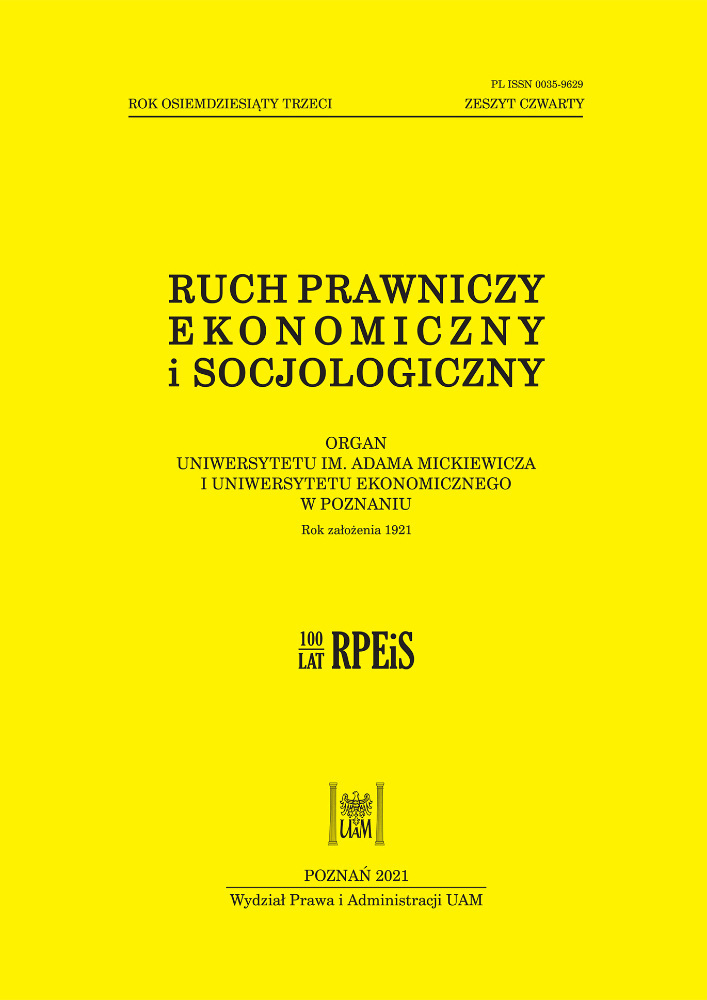Abstrakt
Celem artykułu jest analiza kosztów obecności spółek na NewConnect oraz zbadanie ich postrzegania przez notowanych na tym rynku emitentów. Hipoteza poddana weryfikacji w artykule zakłada, że koszty obecności spółek na rynku NewConnect są wysokie z punktu widzenia notowanych na tym rynku spółek. Taka percepcja kosztów może ograniczać rozwój NewConnect przez negatywne postrzeganie tego rynku bezpośrednio przez emitentów, a pośrednio również przez inwestorów i media. Weryfikację hipotezy przeprowadzono z wykorzystaniem badań ankietowych przeprowadzonych wśród spółek notowanych na rynku NewConnect. W badaniu ponad 70% spółek uznało koszty obecności na NewConnect za zbyt wysokie. Biorąc pod uwagę, że nastawienie do kosztów obecności na giełdzie jest najbardziej negatywne w grupie spółek, które pozyskały najmniej kapitału (poniżej 1 mln złotych), bardzo ważna dla postrzegania rynku jest dbałość o jakość spółek dopuszczanych na rynek NewConnect przez jego organizatora, czyli GPW w Warszawie. W szczególności w przypadku spółek, które będą przeprowadzać większe (tzn. kilkumilionowe) emisje akcji, stosunek kosztów obecności na NewConnect do pozyskanej kwoty będzie korzystniejszy, co wraz z poprawą koniunktury giełdowej powinno poprawić ocenę rynku przez emitentów.
Bibliografia
Aczel, A.D., Sounderpandian, J. (2018). Statystyka w zarządzaniu. Warszawa: PWN.
Bernat, A.K. (2015). Luka finansowa w sektorze mikro, małych i średnich przedsiębiorstw na przykładzie województwa świętokrzyskiego. Warszawa: CeDeWu.
Gołda, E., Kowalczyk, I., Nędzi, D. (2019). Finansowanie działalności przedsiębiorstw poprzez rynek NewConnect. Studia Ekonomiczne, Prawne i Administracyjne 1: 65−80.
Homa, M., Mościborska, M. (2016), Monotoniczność premii za ryzyko inwestycji w spółki notowane na NewConnect w oparciu o trójczynnikowy model Famy-Frencha. Finanse, Rynki Finansowe, Ubezpieczenia 82(2): 133−145.
Kruk, M., Sobczak, L. (2019). Finansowanie przedsiębiorstw o wysokim potencjale wzrostu przez NewConnect, [w:] L. Gąsiorkiewicz, J. Monkiewicz (red.), Wyzwania współczesnych rynków finansowych. Management Science Series. Vol. 8. Warszawa: Politechnika Warszawska.
Kordela, D. (2012). Ocena inwestycji na NewConnect na podstawie płynności rynku i stopy zwrotu z akcji. Annales Universitatis Mariae Curie-Skłodowska. Sectio H. Oeconomia 1: 347−358.
Kordela, D. (2013). NewConnect − rynek giełdowy dla małych i średnich przedsiębiorstw. Systematyka, organizacja, perspektywy rozwoju. Warszawa: CeDeWu.
de Leeuw, E.D. (2012). Counting and Measuring Online: The Quality of Internet Surveys. Bulletin de Methodologie Sociologique 114: 68–78.
Lopez-de-Silanes, F., McCahery, J.A., Schoenmaker, D., Stanisic, D. (2019). Estimating the financing gap of small and medium-sized enterprises. Journal of Corporate Finance Research 12(2): 1−54.
Mącik, R., Korba, M. (2010). Wiarygodność pomiaru w badaniach mixed-mode: porównanie efektów stosowania PAPI i CAWI, [w:] K. Mazurek-Łopacińska (red.), Badania marketingowe – nowe wyzwania. Prace Naukowe Uniwersytetu Ekonomicznego we Wrocławiu 96: 199−210.
OECD (2006). The SME Financing Gap. Theory and Evidence. <https://ec.europa.eu/growth/content/sme-financing-gap-theory-and-evidence-vol-1-0_nn> [dostęp: 10.09.2020].
Pastusiak, R. (2010). Efektywność inwestycji na rynku NewConnect w świetle wybranych czynników. Zeszyty Naukowe Uniwersytetu Szczecińskiego. Finanse, Rynki Finansowe, Ubezpieczenia 29: 73−80.
Rymarczyk, J. (2019). Publiczne notowanie akcji jako źródło finansowania małych i średnich przedsiębiorstw. Środkowoeuropejskie Studia Polityczne 1: 155−170.
Storey, D.J. (1996). Understanding the Small Business Sector. London: Routledge.
Szczepankowski, P. (2010). Efektywność wzrostu i rozwoju spółek NewConnect w ujęciu sektorowym. Współczesna Ekonomia 13: 79−96.
Śliwiński, P., Krawiec, J., Nowak, T. (2018). Czy jest miejsce dla bodźców podatkowych dla przedsiębiorstw z sektora MŚP w rozwoju jakościowym rynku NewConnect? Studia i Materiały/Wydział Zarządzania. Uniwersytet Warszawski 1, cz. 1: 23−36.
Wieczorek-Kosmala, M., Błach, J., Trzęsiok, J. (2020). Comparative study of the relevance of equity financing in European SMEs. Journal of Business Economics and Management 21(6): 1543−1560.
WFE (2017). SME Financing and Equity Markets, <https://www.world-exchanges.org/home/index.php/news/world-exchange-news/world-federation-ofexchanges-publishes-report-into--sme-financingequity-markets> [dostęp: 4.09.2020].
Woś, S. (2018). Możliwości pozyskania kapitału udziałowego przez małe i średnie przedsiębiorstwa na europejskich rynkach giełdowych, [w:] B. Stępień (red.). Zarządzanie międzynarodowe − z perspektywy polskich przedsiębiorstw. Poznań: PWE.
Zygmanowski, P. (2017). Determinanty rozwoju rynku akcji NewConnect. Warszawa: CeDeWu.
Zygmanowski, P., Śliwiński, P. (2019). Proposal of Indicators Measuring the Development of Companies Qualified to the NewConnect Focus Segment. Problemy Zarządzania 17(3): 197−211.
Licencja
Prawa autorskie (c) 2021 WPiA UAM

Utwór dostępny jest na licencji Creative Commons Uznanie autorstwa – Użycie niekomercyjne – Bez utworów zależnych 4.0 Międzynarodowe.





